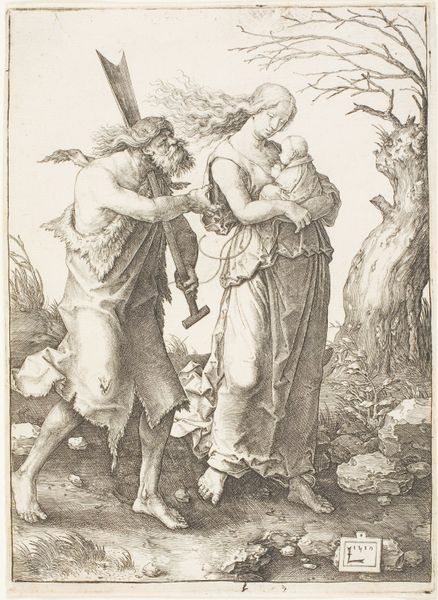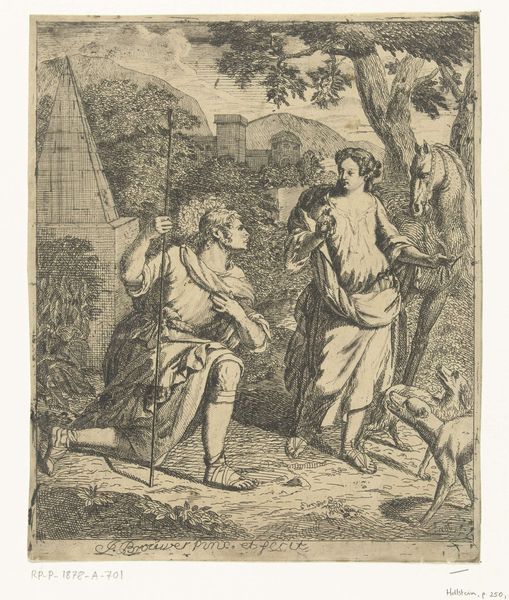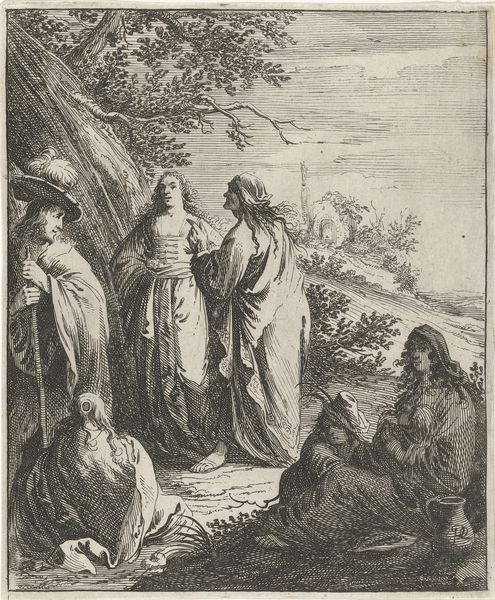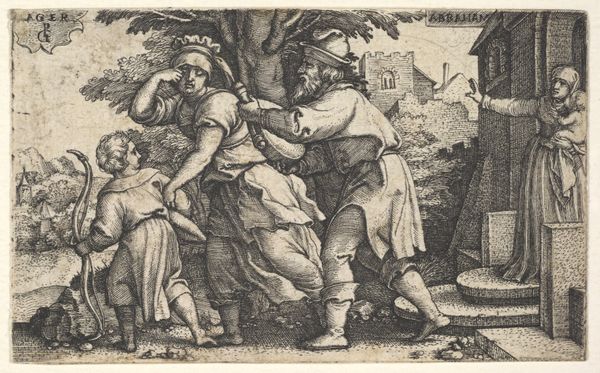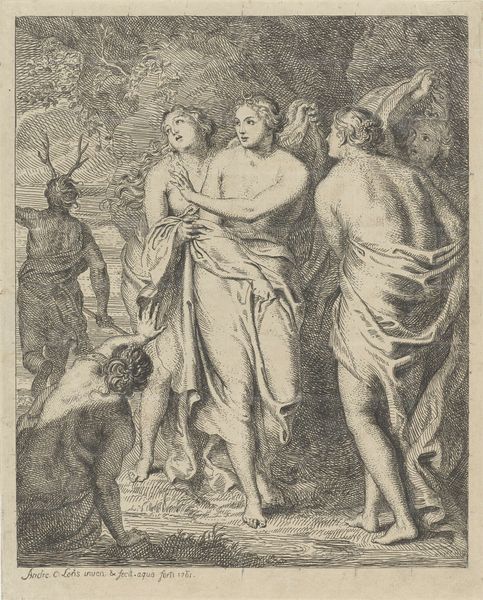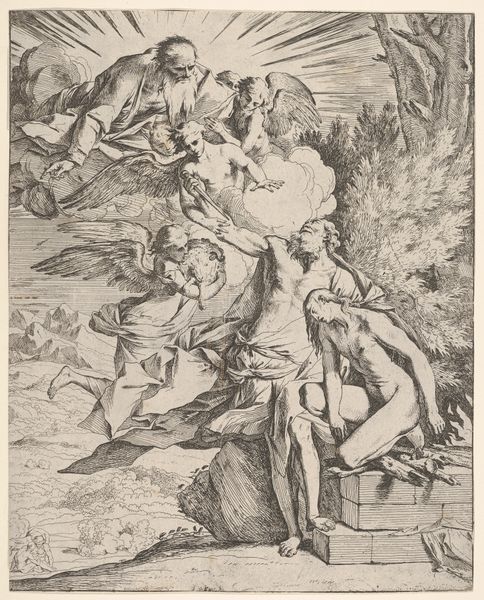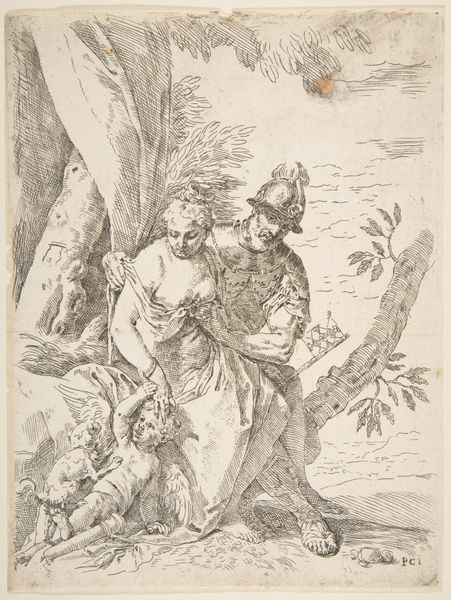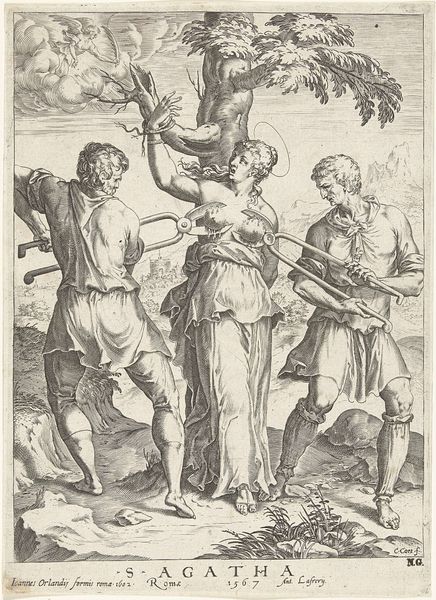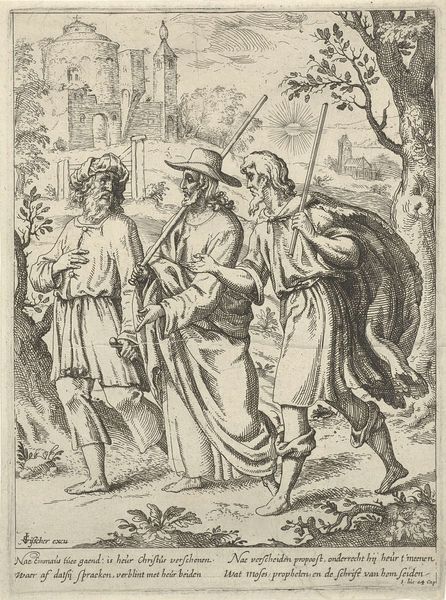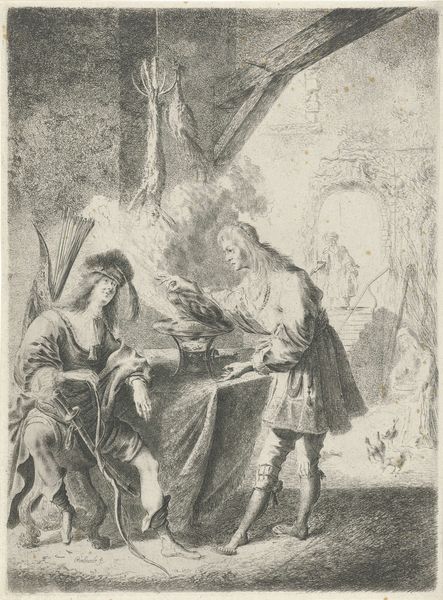
print, engraving
# print
#
figuration
#
history-painting
#
northern-renaissance
#
nude
#
engraving
Dimensions: height 163 mm, width 119 mm
Copyright: Rijks Museum: Open Domain
Curator: Look at the sheer sorrow etched into this scene, the somber tones really amplifying the feeling. Editor: This engraving, titled "Adam and Eve After the Expulsion from Paradise," was crafted by Lucas van Leyden around 1510. It is part of the Rijksmuseum collection. The printmaking medium itself allows for wider distribution and accessibility of this powerful biblical narrative, making it resonate throughout society. Curator: Absolutely, but let’s examine Leyden’s formal decisions. The strong diagonal lines created by Adam's tools draw the eye down, emphasizing the weight of their exile, no? And notice the textures—the fur against Adam's skin, the drape of Eve's dress, creating visual interest. Editor: These carefully chosen objects carry immense cultural weight. The tools Adam bears signal his future labor, while Eve, holding a child, embodies reproduction and domestic labor—the consequences of their transgression impacting both individual toil and societal structures. Curator: A potent semiotic reading, undeniably. The barren landscape too suggests their changed environment; even the tree is bare. The light catches Eve's figure differently than it does Adam's—suggesting hope perhaps? Editor: Considering it as part of the Northern Renaissance, it’s also worth noting that prints like these catered to a growing urban audience, driving a market for religious imagery produced in workshops and contributing to the development of artistic centers, driven by consumption patterns. Curator: Fascinating! It's not just a beautiful piece; it's a poignant depiction of a timeless struggle rendered with great artistry. Editor: A testament to how the material conditions and processes shaping artistic creation can deeply enrich our interpretation.
Comments
No comments
Be the first to comment and join the conversation on the ultimate creative platform.
